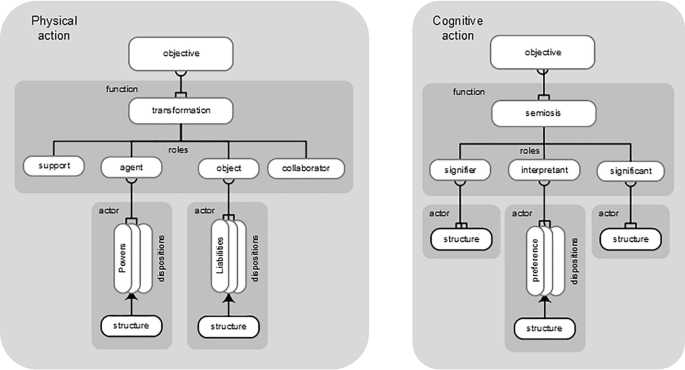
Plants have a remarkable ability to convert sunlight into energy, a process that fuels their growth and sustains life on Earth. This complex mechanism plays a crucial role in the balance of ecosystems, supporting not only plant life but also the animals and humans who depend on them.
By delving into how plants harness light, absorb gases, and produce vital sugars, we gain insight into the fundamental processes that support life. Grasping these concepts is essential for anyone looking to deepen their understanding of how nature sustains itself and how these systems can be influenced by external factors.
In this guide, we will break down the key components of this natural phenomenon, exploring the sequence of events that allow plants to thrive, and how understanding them can enhance our knowledge of both plant and environmental science. Getting a firm grasp on these principles will not only aid in academic studies but also provide a deeper appreciation of the natural world around us.
Mastering Photosynthesis in Biology
Understanding how plants convert sunlight into usable energy is essential for grasping the foundational processes that sustain life on Earth. This natural mechanism involves multiple stages that allow plants to thrive, producing not only their own food but also oxygen, which is vital for all living organisms. Gaining proficiency in these processes enhances both academic knowledge and appreciation of the interconnectedness of life.
The Role of Light in Plant Energy Production
The ability to capture light energy is central to plant survival. During this process, plants absorb sunlight through specialized pigments, primarily chlorophyll, which play a critical role in the conversion of light into chemical energy. This energy is then stored and used to fuel the production of sugars that serve as the plant’s primary energy source.
Key Stages in the Conversion Process
The entire cycle is divided into distinct phases: one that requires light and one that does not. In the light-dependent phase, energy from the sun is absorbed and converted into chemical forms like ATP and NADPH. In the subsequent stage, often referred to as the dark phase, these energy-rich molecules are used to fix carbon dioxide into glucose. This dual-phase process is essential for the energy production that supports not only the plant itself but also every organism that relies on it for food or oxygen.
Comprehending these phases allows students and researchers to see how crucial environmental factors, such as light intensity and carbon dioxide availability, directly influence a plant’s efficiency in energy production. Moreover, understanding the mechanics of this cycle is vital for innovations in agriculture and sustainability practices.
What is Photosynthesis
The process through which plants and certain organisms convert light into chemical energy is one of nature’s most important mechanisms. It allows plants to create their own food, which supports their growth and enables them to release oxygen, a vital element for life on Earth. Understanding this transformation is key to recognizing the crucial role plants play in sustaining life across the planet.
The Basic Process
In simple terms, plants use sunlight to produce sugars and oxygen. This occurs primarily in the leaves, where specialized structures absorb light and facilitate the necessary chemical reactions. The plant uses carbon dioxide from the air and water from the soil to form glucose, which serves as both a source of energy and a building block for growth.
The Chemical Reaction
The general chemical reaction of this process can be simplified as follows:
| Inputs | Process | Outputs |
|---|---|---|
| Sunlight, Carbon Dioxide, Water | Light Energy Absorbed, Chemical Conversion | Glucose, Oxygen |
This transformation is not only a critical source of food for plants but also maintains the balance of gases in the atmosphere, ensuring that oxygen is available for animals and humans to breathe.
Key Processes of Photosynthesis
The transformation of light energy into chemical energy involves a series of well-defined steps. These steps are essential for plants to create the compounds they need for growth and to produce oxygen, which is necessary for most life forms. The entire process can be divided into two main phases, each playing a crucial role in this energy conversion cycle.
Light-Dependent Reactions
During the first phase, plants capture sunlight using pigments in their cells. This energy is then used to produce energy-rich molecules that power the subsequent steps. In this stage, water is also split, releasing oxygen as a byproduct.
Light-Independent Reactions
The second phase takes place in the absence of light. Here, the energy produced in the first stage is used to convert carbon dioxide into glucose, a simple sugar that the plant uses for growth and energy.
| Phase | Main Process | End Products |
|---|---|---|
| Light-Dependent | Sunlight absorbed, water split, energy molecules produced | Oxygen, ATP, NADPH |
| Light-Independent | Energy from ATP and NADPH used to fix carbon dioxide | Glucose |
Both stages work together to create the essential compounds needed for a plant’s survival and growth, with oxygen being released as a beneficial byproduct for other organisms in the ecosystem.
Importance of Chlorophyll in Photosynthesis
Chlorophyll plays a pivotal role in the process by which plants capture energy from sunlight. This green pigment is essential for initiating the conversion of light into usable chemical energy. Without chlorophyll, plants would not be able to absorb light efficiently, making it impossible for them to produce the necessary nutrients that support growth and oxygen production.
The presence of chlorophyll allows plants to absorb light energy, primarily from the blue and red parts of the light spectrum, and convert it into a form that can be used in chemical reactions. It is in this phase that light energy is transformed into high-energy molecules like ATP and NADPH, which fuel the synthesis of sugars and other compounds. Without this pigment, plants would struggle to perform the essential tasks required for their survival and the survival of other organisms dependent on them.
In summary, chlorophyll is not just a pigment but a key facilitator in one of the most fundamental biological processes on Earth. Its ability to harness light energy and convert it into chemical energy enables life on the planet to thrive.
Stages of Photosynthesis Explained
The process of converting light energy into chemical energy involves multiple steps, each of which plays a crucial role in ensuring the plant’s survival. These stages can be broken down into two main phases, each with distinct functions. Understanding these phases helps clarify how plants produce the energy they need and release oxygen into the environment.
Light-Dependent Reactions
In the first phase, plants capture sunlight and convert it into chemical energy. This stage occurs in specialized structures within the plant cells called chloroplasts. Key events in this phase include:
- Absorption of light by chlorophyll and other pigments
- Splitting of water molecules, releasing oxygen as a byproduct
- Production of ATP and NADPH, which are energy-rich molecules
The energy captured in this phase is then used to power the next stage, where carbon dioxide is converted into sugars.
Light-Independent Reactions
In the second phase, also known as the Calvin cycle, the energy stored in ATP and NADPH is used to convert carbon dioxide from the air into glucose. This stage does not require light directly but relies on the products generated during the light-dependent reactions. The main steps include:
- Carbon dioxide is absorbed from the atmosphere
- ATP and NADPH are used to drive the conversion of carbon dioxide into glucose
- Glucose is then stored or used by the plant for energy and growth
These two stages work together to produce the energy and nutrients that are vital for plant growth and for all organisms that rely on plants for sustenance.
Light-Dependent Reactions Overview
The initial phase of the energy conversion process involves capturing sunlight and using it to produce energy-rich molecules. This phase is essential for setting the stage for the next steps, where energy is used to create food and sustain plant growth. The process takes place in specialized structures within the plant cell known as chloroplasts, specifically in the thylakoid membranes.
During this stage, light energy is absorbed by pigments such as chlorophyll, which is crucial for initiating the chain of reactions that lead to the production of ATP and NADPH. These molecules will later power the conversion of carbon dioxide into glucose in the subsequent stage.
The light-dependent reactions also involve the splitting of water molecules, a process that releases oxygen as a byproduct. This oxygen is then released into the atmosphere, making this stage important not only for plant growth but also for sustaining life on Earth.
Key steps in this phase include:
- Absorption of sunlight by chlorophyll and other pigments
- Splitting of water molecules (photolysis) to release oxygen
- Generation of ATP and NADPH through electron transport chains
These reactions are vital for producing the energy that will drive the next phase of the process, ensuring the continuous production of sugars and other essential compounds for plant life.
How ATP is Produced in Photosynthesis
In the initial phase of the energy conversion process, plants harness light energy to create molecules that store and transfer energy. One of the key molecules produced is ATP, which serves as the primary energy currency for the plant. ATP production is vital for fueling various cellular processes, including growth, maintenance, and the conversion of carbon dioxide into sugars.
ATP is generated through a mechanism called photophosphorylation, which occurs in the thylakoid membranes of the chloroplasts. During this process, light energy is absorbed by chlorophyll and other pigments, exciting electrons. These high-energy electrons travel through an electron transport chain, which creates a proton gradient across the membrane. This gradient drives the enzyme ATP synthase, which synthesizes ATP from ADP and inorganic phosphate.
Key steps in ATP production:
- Light energy is absorbed by chlorophyll, exciting electrons
- Electrons pass through the electron transport chain, creating a proton gradient
- The proton gradient powers ATP synthase to produce ATP from ADP
This process is essential for the plant, as ATP provides the energy necessary for the subsequent stages, including the synthesis of glucose, which sustains the plant’s growth and functions.
The Role of Water in Photosynthesis
Water plays an essential role in the process that converts light energy into usable chemical energy. Without water, the energy conversion process would not be able to proceed effectively. Water is involved in key reactions that help plants produce the energy-rich molecules they need to grow and survive.
Water’s Involvement in Light-Dependent Reactions
In the first stage of the process, light energy is absorbed by pigments, which leads to the splitting of water molecules. This process is called photolysis. The breaking down of water molecules serves two important functions:
- It provides electrons to replace those lost by chlorophyll when it absorbs light.
- It releases oxygen as a byproduct, which is essential for maintaining life on Earth.
Water as a Source of Electrons and Protons
As water molecules split, they release electrons and protons (hydrogen ions). These electrons are passed through the electron transport chain, helping to generate ATP and NADPH, which are necessary for the second phase of the process. The protons contribute to the proton gradient that drives ATP synthesis.
In summary, water is not only a source of electrons but also plays a crucial role in producing oxygen and maintaining the energy flow needed for the plant to thrive. Its role in both the light-dependent reactions and the overall energy cycle is indispensable for life on Earth.
Carbon Dioxide Fixation Process
One of the critical steps in the process of energy production within plants is the incorporation of carbon dioxide from the atmosphere. This process involves converting carbon dioxide into a stable, usable form that can later be transformed into organic compounds essential for growth. It occurs during the second phase of the energy conversion process, where energy is stored in sugars.
The fixation of carbon dioxide begins when the molecule enters the plant through small pores in the leaves known as stomata. Once inside the cell, it is captured by a specialized enzyme, which facilitates the bonding of carbon dioxide with a five-carbon compound. This process ultimately forms a stable six-carbon compound, which is then broken down into smaller molecules that will contribute to the formation of sugars.
The key stages of carbon dioxide fixation:
- Carbon dioxide enters the plant through stomata
- It is captured by the enzyme responsible for fixation
- A stable six-carbon compound is formed and broken down into usable molecules
This process is crucial because it provides the foundation for the synthesis of carbohydrates, which serve as the primary source of energy for the plant and the organisms that depend on it.
How Glucose is Formed in Plants
Glucose is the primary energy source for plants, and its formation is a critical part of the plant’s overall growth and metabolic processes. This process occurs after the initial capture of light energy and the fixation of carbon dioxide. Through a series of chemical reactions, plants convert light energy and carbon dioxide into glucose, which is then used for energy, growth, and the synthesis of other essential compounds.
After carbon dioxide is fixed into a stable form during the earlier stages, energy-rich molecules like ATP and NADPH are used to drive the conversion of these carbon compounds into glucose. This occurs in the second phase, known as the Calvin cycle. During this cycle, the carbon atoms from carbon dioxide are arranged and bonded in a way that forms glucose and other sugars.
The process of glucose formation involves:
- The use of energy stored in ATP and NADPH
- The conversion of carbon compounds into glucose through a series of enzyme-driven reactions
- Glucose molecules being used immediately for energy or stored for later use
Glucose formation is vital for plants, as it provides the necessary fuel for their growth and reproduction, and it also serves as the foundation for other vital biomolecules that sustain life on Earth.
Factors Affecting Photosynthesis Efficiency
The efficiency of energy conversion in plants is influenced by several environmental and internal factors. These factors can either enhance or limit the ability of plants to convert light into chemical energy, ultimately impacting their growth, productivity, and survival. Understanding these factors is crucial for improving agricultural practices and managing ecosystems more effectively.
Light Intensity and Quality

The amount and type of light available directly affect the rate at which plants convert light into energy. Light intensity influences the overall energy absorbed by chlorophyll, while the quality of light (its wavelength) determines how well it can be utilized by plants. Different wavelengths of light are absorbed at varying rates, with red and blue light being most effective for energy production.
Carbon Dioxide Concentration
The concentration of carbon dioxide in the environment also plays a significant role. Higher levels of carbon dioxide provide more raw material for the formation of glucose, thus increasing the efficiency of the conversion process. However, at a certain point, an excess of carbon dioxide may no longer lead to an increase in productivity.
Other factors, such as temperature, water availability, and the overall health of the plant, also influence how efficiently energy is produced. Optimizing these conditions is key to maximizing plant growth and ensuring sustainable production.
Photosynthesis and Cellular Respiration Link
The processes of energy creation in plants and animals are intricately connected, forming a continuous cycle that sustains life. While one process captures and stores energy, the other releases it for use. These two systems work together in a feedback loop, supporting each other and ensuring the efficient transfer of energy through ecosystems.
At the heart of this cycle are two vital processes: energy capture in plants and energy release in both plants and animals. In plants, energy is initially captured from sunlight and stored as chemical energy in glucose. This glucose is then used or stored for later use. On the other hand, cellular respiration breaks down glucose to release the stored energy in the form of ATP, which is used by cells for various functions.
The Interdependence of the Two Processes
These processes are interconnected in several key ways:
- During energy capture, plants produce glucose and oxygen, which are used in cellular respiration.
- In cellular respiration, glucose is broken down, releasing carbon dioxide and water, which are then used in the energy capture phase.
- In this cycle, oxygen produced during energy capture is used in respiration, and carbon dioxide from respiration is utilized in photosynthesis.
This constant exchange of materials between the two processes ensures the smooth flow of energy throughout ecosystems, supporting life across the globe. The balance between energy storage and energy release is crucial for maintaining both plant growth and animal survival.
How Environmental Conditions Impact Photosynthesis
The efficiency of energy conversion in plants is heavily influenced by the surrounding environment. Factors such as light, temperature, water availability, and air quality all play crucial roles in determining how well plants can harness energy. Even slight variations in these conditions can have significant effects on plant growth and overall ecosystem health.
Light intensity, for example, affects the rate at which plants absorb energy. Inadequate or excessive light can limit this process, reducing the plant’s ability to produce necessary nutrients. Similarly, temperature fluctuations can either accelerate or hinder chemical reactions within plant cells, with extremes often leading to a decrease in efficiency. Water stress, too, can limit the ability of plants to function properly, as water is required for both energy capture and cooling.
Other environmental factors, such as the concentration of carbon dioxide and the presence of pollutants, also contribute to the plant’s capacity to generate energy. A higher concentration of CO2 can enhance the process, but too much pollution in the air can interfere with the efficiency of energy production. Thus, the delicate balance of environmental conditions determines how well plants can perform their essential functions.
Common Misconceptions About Photosynthesis
There are several misunderstandings surrounding the process by which plants convert light into energy. Many people have misconceptions about the fundamental mechanisms involved, which can lead to confusion when discussing plant biology. These myths often arise due to oversimplified explanations or incomplete information, and addressing them can help deepen our understanding of plant functions.
Misconception 1: Only Plants Perform Energy Conversion

While it’s true that plants are the primary organisms responsible for this energy conversion, they are not the only ones involved. Some bacteria and algae also have the ability to convert light into energy, despite being structurally different from plants. This process occurs in various ecosystems, contributing to the flow of energy in nature.
Misconception 2: Plants Only Need Light to Survive
Although light is essential for energy capture, it is not the only factor necessary for plant survival. Water, carbon dioxide, and the right temperature are also vital components that influence the efficiency of energy production. A plant can be exposed to ample light, but without adequate access to water or carbon dioxide, its energy conversion process will be limited.
By correcting these common myths, we can better appreciate the complexities of how plants sustain life on Earth, helping both scientific learning and practical applications like agriculture and conservation.
Applications of Photosynthesis Knowledge
Understanding how plants convert light into energy has a wide range of practical applications across various fields. From agriculture to renewable energy, this knowledge not only deepens our understanding of life but also provides solutions to modern challenges. By applying the principles of energy conversion in nature, we can improve crop yields, develop sustainable technologies, and even address environmental concerns.
In agriculture, for example, knowledge about the factors influencing energy production in plants allows for the development of more efficient farming practices. By optimizing light exposure, water usage, and soil health, farmers can maximize crop productivity and reduce resource consumption. Similarly, advancements in plant genetics, informed by our understanding of how plants capture energy, have led to the creation of more resilient crops capable of thriving in diverse conditions.
Beyond farming, this knowledge extends to the development of sustainable energy sources. Researchers are exploring ways to harness plant-inspired mechanisms to create artificial systems that mimic the natural process of energy conversion. This could lead to innovations in solar energy technology, where we replicate the process of light absorption to produce clean, renewable power.
Additionally, understanding how plants absorb and convert carbon dioxide is crucial in addressing climate change. By enhancing our ability to capture and store carbon in ecosystems, we can help mitigate the effects of global warming and promote environmental sustainability.
Mastering Photosynthesis for Exams and Tests
To excel in exams or tests covering plant energy conversion, it is crucial to understand the underlying principles and key concepts. Being well-prepared involves not only memorizing terms but also grasping how processes interact and influence each other. A solid grasp of the mechanisms involved can make it easier to approach questions and apply knowledge in practical scenarios.
Key Areas to Focus On

When preparing for exams, focus on the most important components of the process, such as:
- The role of light: Understand how light energy is absorbed and utilized by plants to fuel their internal processes.
- Energy conversion: Review how light energy is converted into chemical energy in the form of glucose.
- Factors affecting efficiency: Study how environmental factors, such as light intensity, temperature, and carbon dioxide levels, impact the rate of energy conversion.
- Stages involved: Familiarize yourself with the various stages and the products formed during these phases.
Effective Study Tips
To enhance your understanding and retention, consider using the following study techniques:
- Visualization: Draw diagrams and flowcharts that represent each stage and process involved.
- Practice questions: Solve previous exam questions or sample tests to familiarize yourself with the format and types of questions asked.
- Active recall: Test yourself regularly on key terms and concepts to reinforce your knowledge.
- Group study: Discuss concepts with peers to clarify doubts and reinforce your understanding.
With the right approach, mastering the details of energy conversion in plants can become much more manageable. Focus on understanding the connections between different processes, and your ability to answer related questions with confidence will improve significantly.